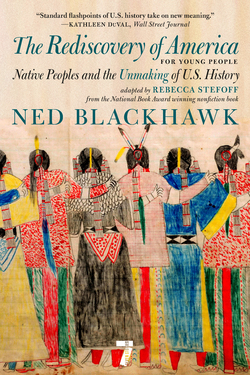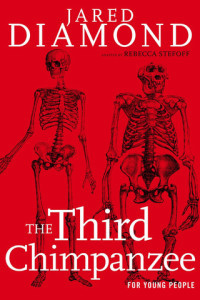Adapted by Rebecca Stefoff
A Young People's History of the United States brings to US history the viewpoints of workers, slaves, immigrants, women, Native Americans, and others whose stories, and their impact, are rarely included in books for young people. Beginning with a look at Christopher Columbus's arrival through the eyes of the Arawak Indians, then leading the reader through the struggles for worker's rights, women's rights, and civil rights during the nineteenth and twentieth centuries, and ending with the current protests against continued American imperialism, Howard Zinn presents a radical new way of understanding America's history. In so doing, he reminds readers that America’s true greatness is shaped by our dissident voices, not our military generals.
Check out our A Young People's History of the United States Lesson Plan here.
For more information about A Young People's History of the United States, and for access to a plethora of other resources about Howard Zinn's work and legacy, please visit The Zinn Education Project.
Watch Rebecca Stefoff on the history of the fight for student rights, read from A Young People's History of the United States:
The Summer that Changed America
The newest addition to the For Young People series is a gripping account of the summer that changed America.
In the summer of 1964, as the Civil Rights movement boiled over, the Student Nonviolent Coordinating Committee (SNCC) sent more than 700 college students to Mississippi to help black Americans already battling segregation, voter disenfranchisement, and other Jim Crow legacies. This campaign was called “Freedom Summer.” But on the evening after volunteers arrived, three young civil rights workers went missing, presumed victims of the Ku Klux Klan.
In the days and weeks that followed, volunteers and local black activists faced intimidation, threats, and violence from white people who didn't believe African Americans should have the right to vote. As the summer unfolded, volunteers were arrested or beaten. Black churches were burned. More Americans came to Mississippi, including doctors, clergymen, and Dr. Martin Luther King, Jr., to teach the community's Freedom Schools, registering voters, and living with black people as equals. Freedom Summer brought out the best and the worst in America. The story told within these pages is of everyday people fighting for freedom, a fight that continues today. Freedom Summer for Young People is a riveting account of a decisive moment in American history, sure to move and inspire readers.
Available in hardcover, paperback, and digital editions.




























